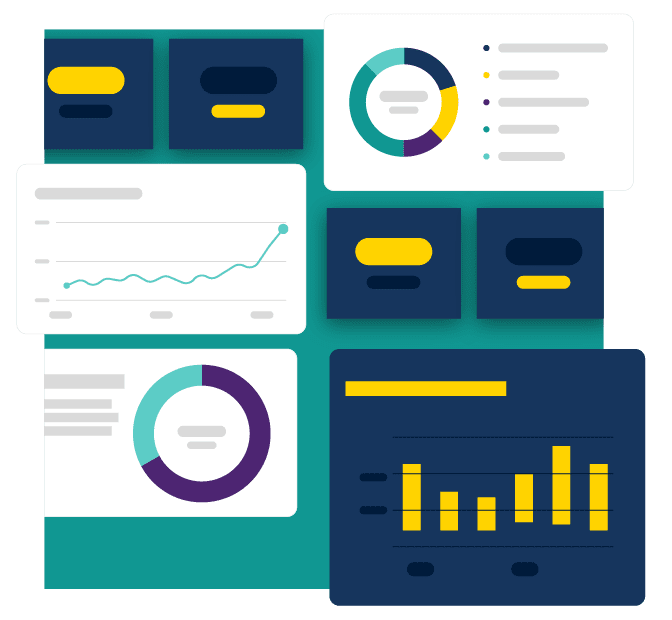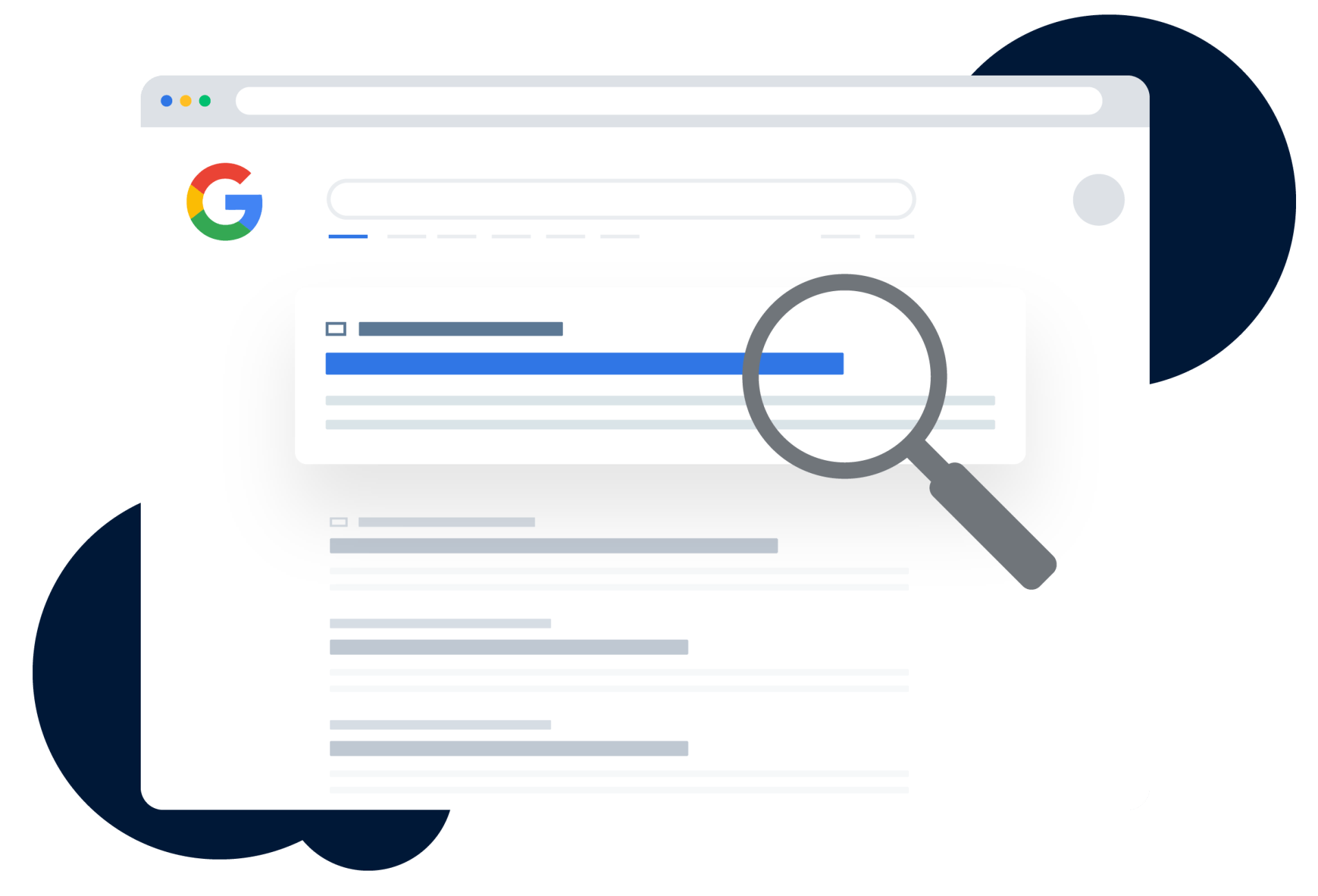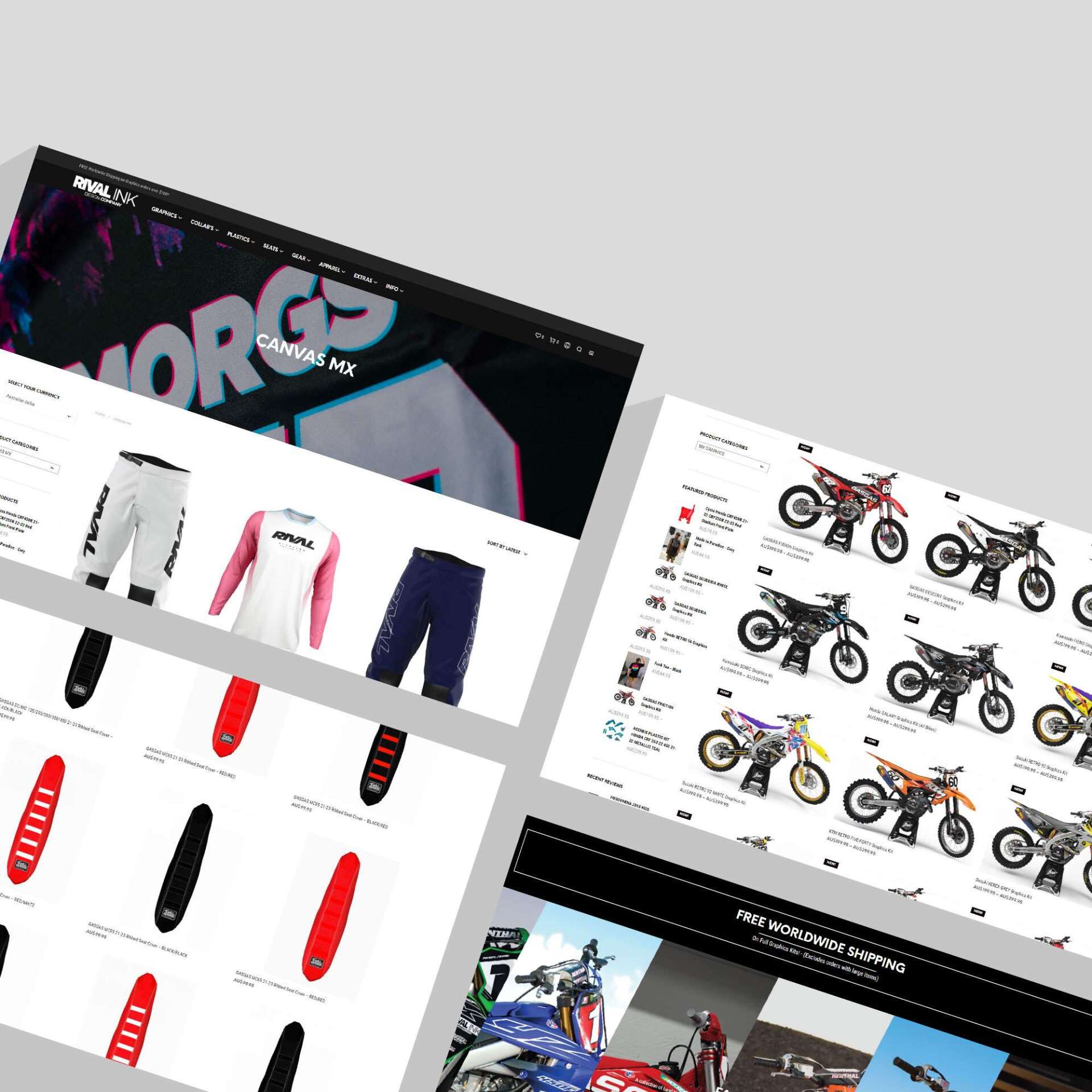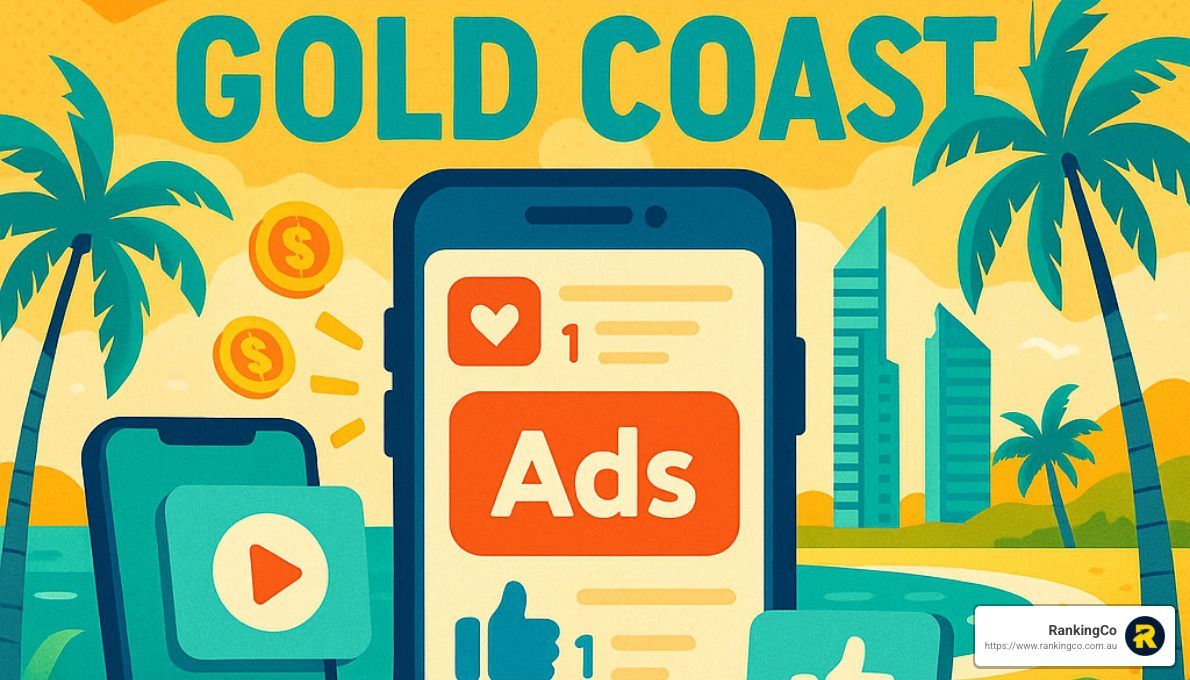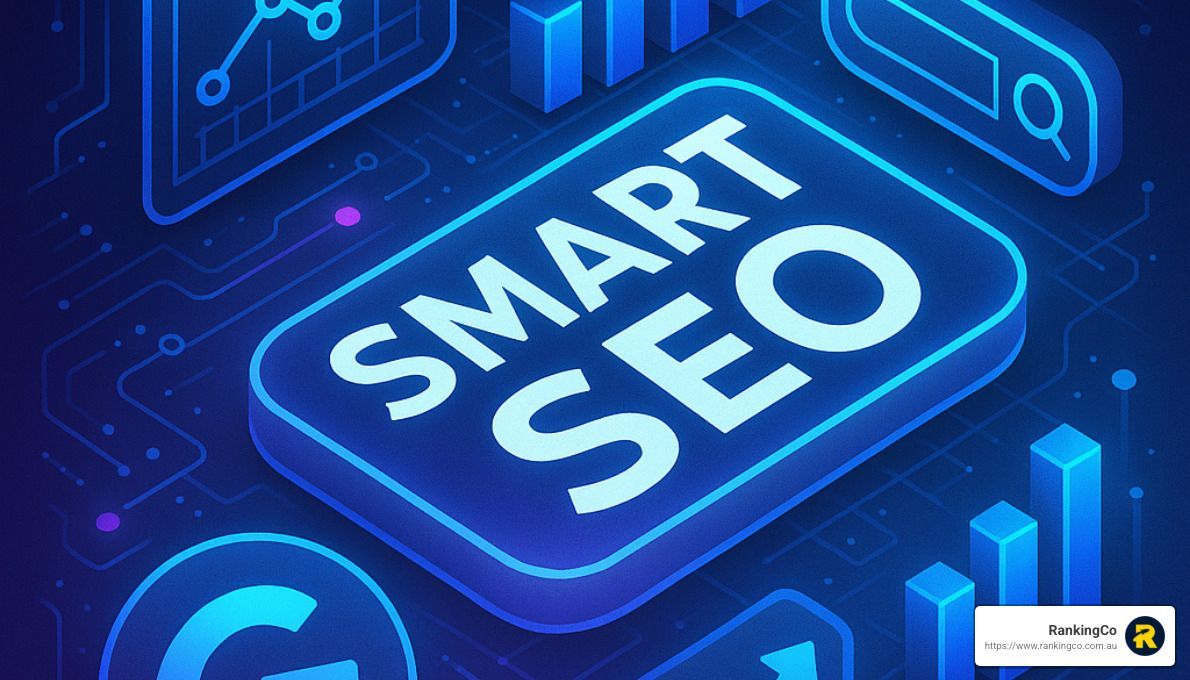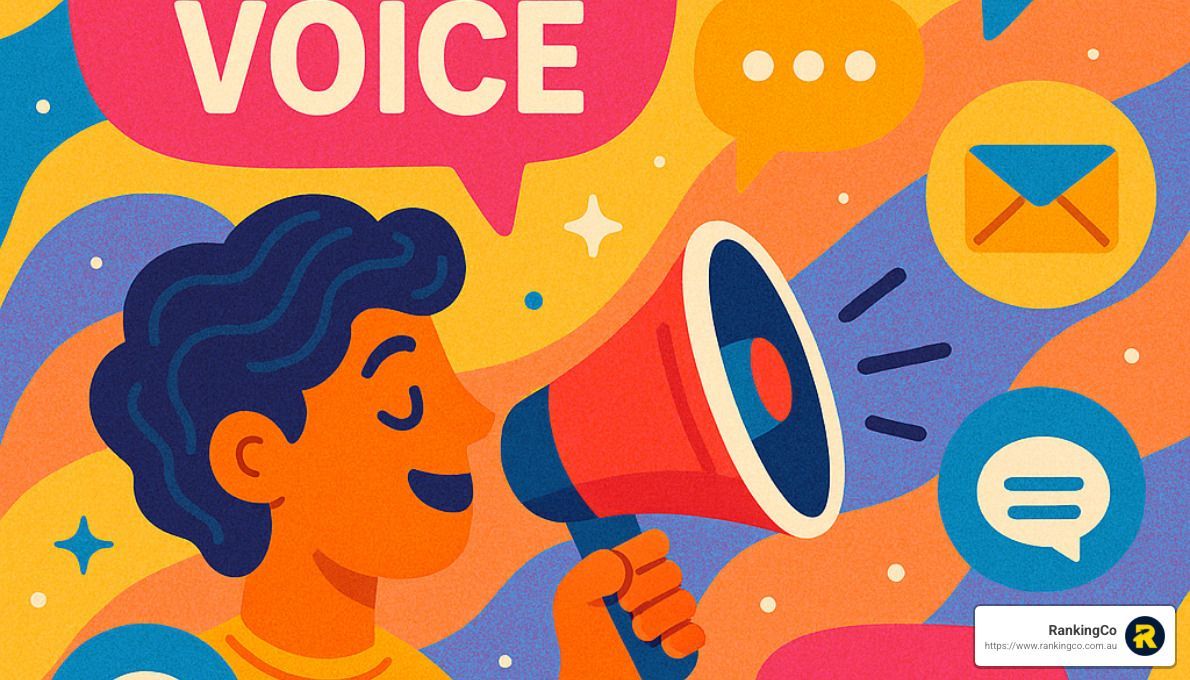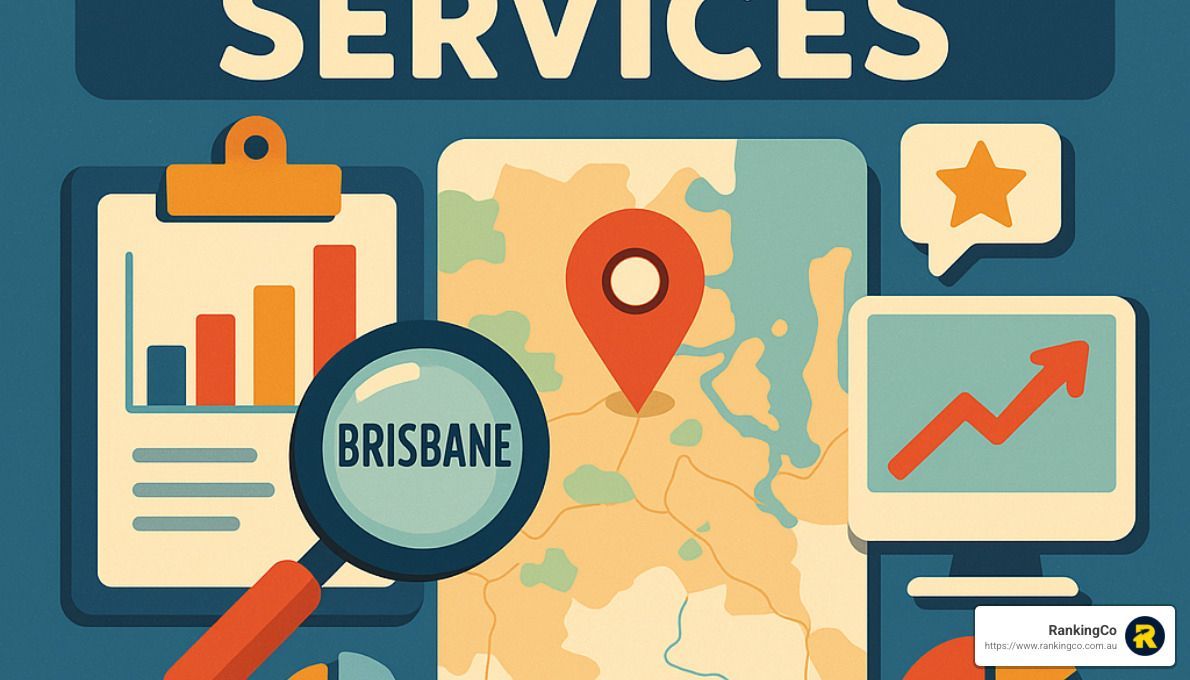How Do You Build a Social Media Marketing Plan from Scratch?
A solid social media marketing plan is crucial for navigating today's digital landscape, where platforms hold immense power in shaping brand perception and audience engagement. This plan is not only vital for establishing your brand's presence, but also for achieving sustained growth and reaching the right audience. When consumers expect seamless digital interactions, having a clearly defined strategy can significantly boost your marketing impact.
Here's a quick checklist to get started:
- Set clear objectives: Align your goals with broader business objectives.
- Know your audience: Understand their demographics and preferences.
- Audit your presence: Evaluate current performance for improvement.
- Choose platforms wisely: Focus on platforms where your audience engages most.
- Develop engaging content: Create a content strategy that resonates with your audience.
A well-crafted social media marketing plan can transform your digital marketing efforts, elevating your brand to new heights.
I'm Amber Porter, CEO at RankingCo and a seasoned digital marketing strategist. I've spent years honing the art of crafting custom social media marketing plans, ensuring businesses just like yours thrive in an changing digital world.
Set Clear Social Media Goals and Objectives
Setting clear and precise goals is the cornerstone of a successful social media marketing plan. Without a roadmap, even the best efforts can lead to missed opportunities. Here's how to ensure your goals are well-defined and aligned with your business objectives.
SMART Goals
To make your goals effective, they should be SMART: Specific, Measurable, Achievable, Relevant, and Time-bound.
- Specific: Clearly define what you want to achieve. For instance, instead of saying "increase followers," aim for "gain 500 new Instagram followers in the next three months."
- Measurable: Use metrics to track progress. If your goal is to increase engagement, track likes, comments, and shares.
- Achievable: Set realistic targets. Consider your resources and current performance to set goals that are challenging yet attainable.
- Relevant: Align goals with your broader business objectives. If your business aims to boost online sales, your social media goal might focus on driving traffic to your online store.
- Time-bound: Set a clear deadline to keep your team accountable. For example, "increase website traffic by 20% in the next quarter."
Align with Business Objectives
Your social media goals should not exist in isolation. They need to support and improve your business objectives. For example, if your company is launching a new product, your social media goal might be to build anticipation and awareness through targeted campaigns.
A case in point is how Sani, a family-owned apparel company, used TikTok to share behind-the-scenes content, aligning their social media efforts with their business goal of expanding brand awareness.
Accept Social Commerce
Social commerce is becoming a critical part of the social media landscape. Platforms like Instagram and Facebook are now direct shopping channels, making it easier for businesses to convert followers into customers.
Consider setting goals that leverage social commerce features:
- Increase sales directly through social platforms by integrating product catalogs.
- Run exclusive promotions for followers to drive sales.
- Engage with customers through shoppable posts and stories.
By incorporating social commerce into your strategy, you can create a seamless shopping experience that aligns with consumer expectations and boosts your bottom line.
Next, we'll dig into defining your target audience to ensure your content resonates with the right people.
Define Your Target Audience
Understanding your target audience is crucial to crafting a successful social media marketing plan. Knowing who you are speaking to allows you to tailor your content and messaging effectively. Let's break it down into three main components: demographics, buyer personas, and audience segmentation.
Demographics
Demographics provide a snapshot of your audience’s basic characteristics. This includes age, gender, location, income level, education, and occupation. For example, if you're targeting young adults aged 18-24, platforms like Instagram and TikTok are likely more effective than LinkedIn.
- Age: Different age groups have different preferences. While younger audiences might prefer dynamic content, older demographics might value informative posts.
- Location: Knowing where your audience lives can help tailor content to their local culture or language. For instance, a Brisbane-based business might share local events or news that resonate with their community.
- Income and Education: These factors can influence purchasing behaviour and content engagement. A luxury brand might focus on high-income earners, while an educational service might target those with specific academic backgrounds.
Buyer Personas
Creating buyer personas involves developing fictional characters that represent your ideal customers. This helps you understand their needs, challenges, and motivations. A well-crafted persona goes beyond demographics to include:
- Interests and Hobbies: Knowing what your audience enjoys can help you create content that captivates them. For instance, a fitness brand might target health enthusiasts who enjoy outdoor activities.
- Pain Points: Understanding the challenges your audience faces allows you to offer solutions through your products or services. This can be particularly effective in content marketing.
- Media Consumption Habits: Knowing which platforms your audience uses and how often can inform your posting schedule and content type.
Audience Segmentation
Audience segmentation involves dividing your audience into smaller groups based on shared characteristics. This allows for more personalised marketing efforts. Segmentation can be based on:
- Behaviour: Grouping your audience by their actions, such as purchase history or engagement levels, helps tailor specific messages to each segment.
- Psychographics: This involves understanding your audience’s values, attitudes, and lifestyle. A brand promoting sustainable products might segment their audience based on environmental consciousness.
- Platform Preference: Different segments may prefer different social media platforms. For example, a professional audience might engage more on LinkedIn, while a creative audience might be more active on Pinterest or Instagram.
By defining your target audience through demographics, buyer personas, and audience segmentation, you can create a more focused and effective social media strategy. This ensures your content reaches the right people and resonates with them, enhancing engagement and conversion rates.
Next, we'll explore how to audit your current social media presence to identify strengths and areas for improvement.
Audit Your Current Social Media Presence
Auditing your current social media presence is a vital step in building an effective social media marketing plan. It helps you understand what's working, identify areas for improvement, and refine your strategy. Let's explore three key areas: performance analysis, content quality, and analytics tools.
Performance Analysis
Start by evaluating the performance of your social media accounts. This involves looking at metrics like engagement rates, follower growth, and reach.
- Engagement Rates: Measure the number of likes, comments, shares, and clicks your posts receive. High engagement indicates that your content resonates with your audience.
- Follower Growth: Track how your follower count changes over time. Steady growth suggests your content is attracting new viewers, while a decline may signal the need for strategy adjustments.
- Reach and Impressions: These metrics show how many people see your content. While reach counts unique viewers, impressions tally total views, even if the same person sees your post multiple times.
Using these metrics, identify which posts perform well and why. This will help you replicate success in future content.
Content Quality
Assess the quality of the content you are sharing. High-quality content is engaging, relevant, and aligns with your brand voice.
- Relevance: Ensure your content aligns with your audience's interests and needs. For example, a Brisbane-based café might share local coffee culture stories or seasonal menu updates.
- Visual Appeal: Use high-quality images, videos, and graphics. Platforms like Instagram and Pinterest thrive on visually striking content.
- Consistency: Maintain a consistent posting schedule and style. This helps build brand recognition and trust.
Review past posts to identify patterns in successful content. Consider factors like tone, format, and timing to refine your approach.
Analytics Tools
Use analytics tools to gather insights and track your social media performance effectively. Tools like Hootsuite and Sprout Social offer comprehensive analytics dashboards.
- Hootsuite: This tool allows you to review all your social media channels in one place, making it easier to track performance metrics and engagement rates.
- Sprout Social: Offers detailed audience demographics and engagement insights, helping you tailor your content to the right audience.
- Google Analytics: Use this tool to track traffic from social media to your website. It helps measure the effectiveness of your social media efforts in driving conversions.
These tools provide valuable data that can guide your social media strategy. Regularly analyze this data to spot trends and adjust your tactics accordingly.
By conducting a thorough audit of your social media presence, you can identify strengths to build on and areas that need improvement. This sets the stage for choosing the right social media platforms, which we'll explore next.
Choose the Right Social Media Platforms
Selecting the right platforms is crucial for an effective social media marketing plan. Focus your efforts where your audience is most active and where your content will shine. Let's explore platform strengths, user base, and content types.
Platform Strengths
Each social media platform has unique features that cater to different marketing needs. Understanding these strengths helps you decide where to invest your time and resources.
- Facebook: Ideal for community building and reaching a broad audience. It's great for sharing long-form content, announcements, and engaging directly with customers. With over 2.9 billion users, it offers extensive ad-targeting options.
- Instagram: Perfect for visual storytelling and brand aesthetics. This platform thrives on images and short videos, making it a go-to for industries like fashion, food, and travel. Instagram's shopping features allow businesses to convert followers into customers easily.
- X (Twitter): Best for real-time conversations and industry insights. It's effective for quick updates, customer service, and establishing a brand voice. Use it to engage in timely discussions and share industry news.
User Base
Understanding the demographics of each platform helps tailor your content to the right audience. Different platforms attract different age groups and interests.
- Facebook's user base is broad, with a strong presence among adults aged 25–44. It's a good choice if you want to reach a wide demographic.
- Instagram attracts a younger audience, particularly those aged 18–34. It's popular among users interested in lifestyle and visual content.
- X is favoured by users who enjoy staying updated on current events and industry news. It appeals to an audience interested in real-time information and conversations.
Content Types
Different platforms support various content types, which influences how you present your message.
- Facebook supports a mix of content types, including text, images, videos, and live streams. It's versatile for both informative and entertaining content.
- Instagram focuses on visual content like photos, videos, and stories. It's ideal for showcasing products and creating engaging visual narratives.
- X is designed for short, concise content. Use it for quick updates, links to articles, and engaging in conversations with hashtags.
To make the most of your social media marketing plan, choose platforms that align with your brand's strengths and your audience's preferences. This strategic approach ensures your efforts are effective and your message reaches the right people.
Up next, we'll dig into researching and identifying your competitors to gain a competitive edge.
Research and Identify Your Competitors
Understanding your competitors is a vital part of building a successful social media marketing plan. It informs your content strategy and helps identify opportunities for high-performing content.
Competitor Analysis
Begin by identifying your top competitors. Look at brands in your industry or niche that are active on social media. Use tools like BuzzSumo or SEMrush to gather insights on their performance.
Key Actions:
- Monitor Their Content: Track what your competitors are posting. Are they using videos, blogs, or infographics? Note the type of content that gets the most engagement.
- Evaluate Engagement: Look at likes, comments, shares, and other interactions. This tells you what resonates with their audience.
- Check Their Followers: Analyze the size and demographics of their audience. This can help you understand who they are targeting and how successful they are at reaching them.
Content Strategy
Once you have a handle on your competitors, analyze their content strategy. This involves understanding what works for them and where they might be lacking.
Key Actions:
- Identify Content Gaps: Look for areas where your competitors might not be addressing audience needs or interests. This is your opportunity to fill those gaps with your content.
- Learn From Their Success: Study their high-performing posts. What makes them stand out? Is it the tone, format, or timing? Use these insights to refine your own strategy.
- Avoid Copying: While it's important to learn from competitors, ensure your content remains original and authentic to your brand's voice.
High-Performing Content
High-performing content is content that drives engagement, shares, and ultimately, conversions. By understanding what works for your competitors, you can create content that performs well for your brand.
Key Actions:
- Spot Trends: Keep an eye on trending topics or content formats that your competitors are using successfully. Incorporate these trends into your content strategy, but tailor them to fit your brand's voice and goals.
- Test and Adapt: Experiment with different content types and formats. Use analytics to track performance and adjust your strategy based on what works best.
- Focus on Value: Ensure your content provides value to your audience. This could be through educating, entertaining, or solving a problem for them.
By thoroughly researching and identifying your competitors, you can gain valuable insights to inform your social media marketing plan. This competitive edge will help you create content that not only meets your audience's needs but also stands out in a crowded market.
Next, we'll explore how to develop a content strategy that keeps your audience engaged and coming back for more.
Develop a Content Strategy for Social Media
Creating a compelling content strategy is crucial for keeping your audience engaged and loyal. Let's break down the key elements: content types, a content calendar, and user-generated content.
Content Types
Different types of content resonate with different audiences. Here’s a quick guide:
- Educational Content: Offers value by teaching something new. Think guides, how-tos, and infographics.
- Inspirational Content: Motivates and engages. Use quotes, success stories, and testimonials.
- Promotional Content: Directly highlights your products or services. Use offers, discounts, and product demos.
- User-Generated Content (UGC): Content created by your audience. Encourage reviews, testimonials, and shared experiences.
Pro Tip: Videos are highly engaging. They receive more views and shares than other types of posts. On platforms like Facebook, video posts outperform image or link posts in engagement.
Content Calendar
A content calendar is your roadmap for consistent posting. It helps you plan, organize, and execute your content strategy efficiently.
Steps to Create a Content Calendar:
- Set Posting Frequency: Decide how often you want to post. For example, aim for 3-7 times per week on Instagram or 1-5 times per day on LinkedIn.
- Schedule Content Types: Mix different content types to keep your audience engaged. Use a strategy like the 4:1 ratio: for every four staple posts, add one unique or varied post.
- Plan Ahead: Use tools like Hootsuite or Buffer to schedule posts in advance. This saves time and ensures consistency.
- Monitor Optimal Times: Post when your audience is most active. Use analytics tools to find the best times for engagement.
Pro Tip: Use your content calendar to also plan interactions with your audience. Schedule time to reply to comments and engage with followers.
User-Generated Content (UGC)
UGC is a powerful way to build community and trust. It’s authentic and often more relatable to your audience.
Benefits of UGC:
- Builds Trust: People trust content from other users more than brand-generated content.
- Encourages Engagement: Invites your audience to participate, increasing interaction.
- Cost-Effective: Reduces the need for constant content creation by your team.
How to Encourage UGC:
- Create Hashtags: Encourage followers to share content using a specific hashtag.
- Run Contests: Offer incentives for sharing content related to your brand.
- Feature Followers: Highlight user-generated posts on your official channels.
By focusing on these elements, you’ll develop a content strategy that not only captures your audience’s attention but also fosters a community around your brand. Next, we’ll discuss how to set your budget and allocate resources effectively for your social media marketing plan.
Set Your Budget and Allocate Resources
Having a clear budget is essential for a sustainable social media marketing plan. It ensures you spend wisely and get the most value from your efforts. Let's explore the key areas: budget planning, paid ads, and influencer collaborations.
Budget Planning
Start by determining your overall budget. Consider factors like your business size, goals, and available resources. Break down your budget into different categories, such as content creation, advertising, and tools.
Steps for Budget Planning:
- Set Priorities: Determine which areas are most important for your strategy. For example, focus more on advertising if your goal is to increase brand awareness quickly.
- Allocate Funds Wisely: Divide your budget into categories like paid ads, content creation, and influencer collaborations. Ensure each category supports your overall goals.
- Monitor and Adjust: Regularly review your spending. Adjust allocations based on performance and changing priorities.
Pro Tip: Start small and scale up. Test different strategies to see what works best before committing more funds.
Paid Ads
Paid advertising can boost your reach and engagement significantly. Platforms like Facebook and Instagram offer targeted ads that can reach specific demographics.
Benefits of Paid Ads:
- Targeted Reach: Ads can be custom to specific audiences, increasing the chance of engagement.
- Measurable Results: Track clicks, conversions, and other metrics to see how your ads perform.
- Flexibility: Adjust your ad spend and targeting as needed to optimize results.
How to Use Paid Ads Effectively:
- Set Clear Objectives: Know what you want to achieve, whether it's more followers, website visits, or sales.
- Choose the Right Platform: Different platforms suit different goals. For instance, LinkedIn is great for B2B, while Instagram excels in visual content.
- Test and Optimize: Run A/B tests to find the most effective ad copy, images, and targeting options.
Pro Tip: Use platform insights to refine your ad strategy. Adjust based on what works best for your audience.
Influencer Collaborations
Partnering with influencers can amplify your reach and credibility. Influencers have established trust with their followers, which can benefit your brand.
Benefits of Influencer Collaborations:
- Authentic Promotion: Influencers promote products in a relatable way, often leading to higher engagement.
- Broader Reach: Access new audiences that may not be aware of your brand.
- Quick Results: Influencer campaigns can lead to immediate increases in visibility and engagement.
How to Collaborate with Influencers:
- Choose the Right Influencers: Look for those whose audience aligns with your target market. Ensure they have genuine engagement, not just high follower counts.
- Define Clear Goals: Be specific about what you want to achieve, whether it's brand awareness, product promotion, or content creation.
- Negotiate Terms: Agree on deliverables, timelines, and compensation. Ensure both parties understand the expectations.
Pro Tip: Focus on long-term relationships. Building ongoing partnerships with influencers can yield better results than one-off campaigns.
By carefully budgeting and allocating resources, you can maximize the impact of your social media marketing plan. Next, we’ll look at how to create a social media posting schedule that keeps your brand visible and engaging.
Create a Social Media Posting Schedule
Creating a consistent posting schedule is crucial for maintaining visibility and engagement with your audience. Here’s how to do it effectively:
Consistency is Key
Consistency helps build trust and keeps your audience engaged. Regular posting ensures your brand stays top-of-mind.
Why Consistency Matters:
- Builds Brand Recognition: Frequent posts help reinforce your brand identity.
- Increases Engagement: Regular interaction encourages followers to engage more.
- Improves Algorithm Favorability: Platforms often reward consistent activity with better visibility.
Steps to Maintain Consistency:
- Set a Schedule: Decide how often to post on each platform. For example, aim for 3-7 posts per week on Instagram.
- Use a Content Calendar: Plan your posts in advance to ensure a steady flow of content.
- Stick to a Routine: Posting at the same times each day or week can help establish a routine for your audience.
Use Management Tools
Social media management tools can save time and effort by automating the posting process.
Benefits of Using Tools:
- Efficiency: Schedule posts in advance, freeing up time for other tasks.
- Organization: Keep track of all your content in one place.
- Insights: Access analytics to see what’s working and what needs improvement.
Popular Management Tools:
- Hootsuite: Offers scheduling, analytics, and monitoring features.
- Buffer: Simplifies scheduling and provides performance insights.
- Later: Focuses on visual planning for Instagram and other platforms.
Pro Tip: Choose a tool that fits your needs and budget. Many offer free trials to help you decide.
Optimal Posting Times
Posting at the right times can significantly boost your content's reach and engagement.
Finding the Best Times:
- Analyze Data: Use insights from your management tools to identify when your audience is most active.
- Experiment: Test different posting times to see what works best for your brand.
- Stay Informed: Keep up with industry trends and studies that suggest optimal times for each platform.
General Guidelines:
- Instagram: Early morning or late evening when users are most active.
- Facebook: Mid-week afternoons, particularly around 1-4 PM.
- LinkedIn: Weekdays during business hours for B2B engagement.
Pro Tip: Adjust your schedule based on seasonal changes and audience behavior. What works today might need tweaking tomorrow.
By setting a consistent schedule, leveraging management tools, and posting at optimal times, you can improve the effectiveness of your social media marketing plan. Next, we’ll explore how to measure, analyze, and optimize your performance to ensure continued success.
Measure, Analyse, and Optimise Performance
Once your social media marketing plan is in action, it's crucial to measure its performance. Understanding what works and what doesn't allows you to refine your strategy for better results.
Performance Metrics: What to Track
To get the most out of your social media efforts, focus on metrics that align with your goals:
- Engagement Rate: Measures how users interact with your content. Likes, comments, and shares are key indicators.
- Reach and Impressions: Reach indicates how many unique users saw your content, while impressions show how many times it was displayed.
- Clicks and Conversions: Track clicks on your posts and how many of those clicks lead to desired actions, like purchases or sign-ups.
- Follower Growth: Monitor how your audience size changes over time.
These metrics help you understand your audience's behavior and the effectiveness of your content.
Using Analytics Tools
Analytics tools are essential for tracking and interpreting your performance data. Here are some popular options:
- Google Analytics: Offers insights into how social media traffic interacts with your website. Use it to track conversions and referral traffic.
- Hootsuite Analytics: Provides a comprehensive view of your social media performance across multiple platforms.
- Native Platform Analytics: Facebook, Instagram, and other platforms offer built-in analytics tools to track engagement, reach, and more.
Pro Tip: Regularly check your analytics to stay informed and make data-driven decisions.
Conversion Tracking: Turning Interest into Action
Conversion tracking helps you see how well your social media efforts are driving valuable actions. Set up conversion goals in your analytics tools to monitor actions like:
- Purchases: Track when users buy a product after clicking from social media.
- Sign-Ups: Measure how many people subscribe to your newsletter or service.
- Downloads: Keep an eye on how often users download resources like eBooks or guides.
How to Set Up Conversion Tracking:
- Define Your Goals: Decide what actions you want to track (e.g., sales, sign-ups).
- Use UTM Parameters: Add tracking codes to your social media links to see where traffic comes from.
- Analyze Results: Look for patterns in the data to understand what drives conversions.
Optimising Your Strategy
After gathering and analyzing your data, it's time to optimize your strategy:
- Test and Learn: Experiment with different content types, posting times, and platforms.
- Refine Your Approach: Use insights from your data to adjust your content and targeting.
- Stay Flexible: Adapt to changes in audience behavior, platform algorithms, and industry trends.
By focusing on performance metrics, leveraging analytics tools, and tracking conversions, you can fine-tune your social media marketing plan for ongoing success.
Next, we'll discuss how to stay updated on social media trends and innovations to keep your strategy fresh and effective.
Stay Updated on Social Media Trends and Innovations
Staying ahead in social media requires keeping up with the latest trends and platform changes. This ensures your social media marketing plan remains effective and relevant.
Platform Changes: Adapting to New Features
Social media platforms frequently update their features and algorithms. These changes can impact how your content is seen and engaged with. Here's how to stay on top:
- Follow Official Announcements: Platforms like Facebook and Instagram regularly post updates about new features. Subscribe to their blogs or follow them on social media.
- Test New Features: When platforms introduce new tools, like Instagram Reels or TikTok's editing options, experiment to see how they fit into your strategy.
- Monitor Algorithm Updates: Changes in algorithms can affect your visibility. Stay informed and adjust your content strategy to maintain engagement.
Emerging Trends: What's Gaining Traction?
New trends can shape how audiences interact with content. Here are some to watch:
- Short-Form Video: Platforms like TikTok and Instagram Reels have made short videos incredibly popular. They're engaging and can boost brand visibility.
- Private Sharing: Users are increasingly sharing content privately through direct messages. Consider how you can engage with audiences in these spaces.
- Social Commerce: Platforms are becoming shopping destinations. Use features like shoppable posts to drive sales directly from your social media.
AI Tools: Enhancing Your Strategy
Artificial Intelligence (AI) is changing social media marketing. It can help you create and manage content more efficiently:
- Content Creation: AI tools can generate ideas, write captions, or even create graphics. This can save time and keep your content fresh.
- Chatbots: Use AI-driven chatbots to interact with followers, answer questions, and provide customer support, even when you're offline.
- Analytics and Insights: AI can analyze large sets of data to provide deeper insights into audience behavior and content performance.
Pro Tip: Stay curious and open to experimenting with new tools and trends. This will help you maintain a competitive edge.
By keeping up with platform changes, embracing emerging trends, and leveraging AI tools, you ensure your social media marketing plan remains dynamic and effective.
Next, we'll explore how to develop a content strategy that captivates your audience and drives engagement.
Frequently Asked Questions about Social Media Marketing Plans
What is a social media marketing plan?
A social media marketing plan is a structured approach to using social media platforms to achieve your business goals. It involves setting clear objectives, understanding your audience, and creating content that resonates with them. This plan helps businesses promote their brand, engage with customers, and drive sales using platforms like Instagram, Facebook, and more. According to RankingCo, a well-defined plan aligns with broader business objectives and ensures that your social media efforts are focused and effective.
How do I set goals for my social media strategy?
Setting goals for your social media strategy is crucial for measuring success. Start by aligning your goals with your overall business objectives, such as increasing brand awareness or generating leads. Use the SMART criteria—Specific, Measurable, Achievable, Relevant, and Time-bound—to ensure your goals are clear and trackable. For example, if your goal is to increase engagement, specify a target percentage increase and a timeframe. As highlighted in the research, incorporating social commerce goals is also important as platforms become shopping destinations.
What are the best tools for managing social media?
Managing social media can be streamlined with the right tools. Social media automation tools like Buffer and Hootsuite allow you to schedule posts and analyze performance. These tools help you maintain consistency and optimize posting times based on audience insights. Content creation tools such as Canva and PicMonkey are great for designing visually appealing posts. For deeper audience insights and engagement tracking, tools like Sprout Social and Mention are recommended. These resources make it easier to manage multiple accounts and ensure your content reaches the right audience efficiently.
Next, we'll recap the 10 essential steps for building a social media marketing plan from scratch, emphasizing the importance of consistent effort and adaptation.
Unlocking Your Social Media Potential
Creating a successful social media marketing plan involves a strategic approach and dedication. Let's recap the 10 essential steps:
- Set Clear Social Media Goals and Objectives: Start with SMART goals that align with your broader business objectives.
- Define Your Target Audience: Know who you're talking to by researching demographics and creating buyer personas.
- Audit Your Current Social Media Presence: Analyse your performance to identify strengths and areas for improvement.
- Choose the Right Social Media Platforms: Focus on platforms where your audience is most active and engaged.
- Research and Identify Your Competitors: Learn from your competitors to find what works and what doesn't.
- Develop a Content Strategy for Social Media: Plan engaging content that resonates with your audience and maintains consistency.
- Set Your Budget and Allocate Resources: Ensure your strategy is sustainable by planning your budget carefully.
- Create a Social Media Posting Schedule: Use tools to maintain a consistent posting schedule and optimise engagement times.
- Measure, Analyse, and Optimise Performance: Use analytics to track performance and make data-driven adjustments.
- Stay Updated on Social Media Trends and Innovations: Adapt to changes and leverage new tools and trends.
Consistent effort is key. Social media is dynamic, and staying ahead requires regular updates and adjustments. Keep testing and refining your strategy based on performance metrics and emerging trends.
At RankingCo, we understand the importance of a well-crafted social media marketing plan. Our expertise in digital marketing and local SEO can help your business stand out and achieve its goals. If you're ready to take your social media strategy to the next level, explore our Social Media Management services today.
Social media marketing is a journey! Stay flexible, proactive, and committed to continuous improvement for long-term success.
